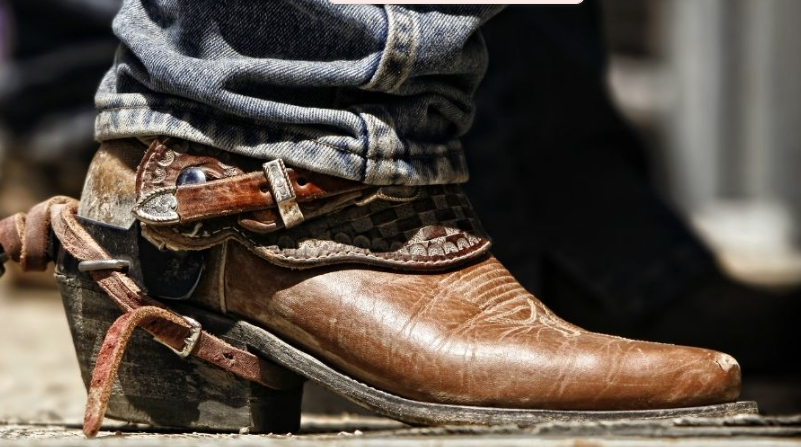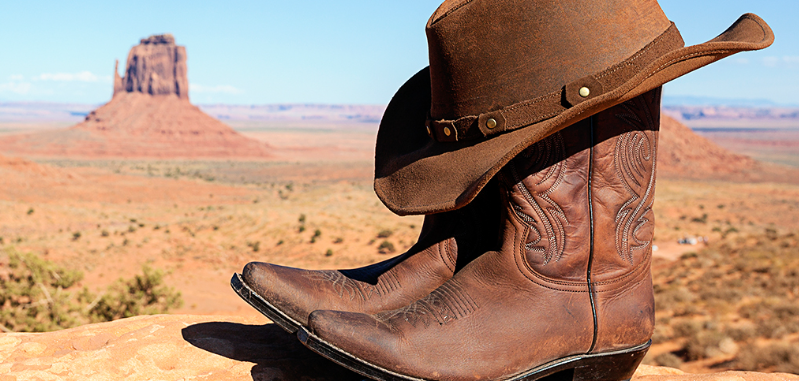Cowboy boots have long been associated with the rugged allure of the American West. From wrangling cattle to stomping through dusty trails, these iconic boots evoke a sense of adventure and grit.
However, there’s been ongoing debate about whether cowboy boots are suitable for motorcycle riding or other type of boots like combat boots or steel toe boots. In this blog, we’ll delve into the characteristics of cowboy boots, explore their pros and cons for motorcycle enthusiasts, and ultimately determine if they make a viable option for hitting the open road on two wheels.
The Anatomy of Cowboy Boots

Before we assess their suitability for motorcycle riding, it’s crucial to understand the anatomy of cowboy boots. These boots typically feature a high shaft that extends up the calf, a pointed toe, a sturdy heel, and often intricate decorative stitching. They are traditionally made of leather, which provides durability and protection against abrasions.
Pros and Cons of Cowboy Boots for Motorcycle Riding

Pros
- Sturdy Construction: Cowboy boots are crafted from high-quality leather and are built to withstand rugged environments. This durability can offer protection in case of minor accidents or road debris.
- Heel Design: The raised heel of cowboy boots provides a secure grip on the motorcycle’s footpegs, offering better control and stability, especially during cornering maneuvers.
- Calf Protection: The high shaft of cowboy boots offers additional coverage and protection to the lower legs, shielding them from wind, debris, and potential burns from hot engine parts.
- Classic Style: Let’s not forget the aesthetic appeal. Cowboy boots exude a timeless style that many riders find appealing, adding a touch of Western flair to their riding gear.
Cons
- Limited Ankle Support: Unlike dedicated motorcycle boots, cowboy boots may lack adequate ankle support and protection, increasing the risk of injury in the event of a crash or sudden impact.
- Sole Flexibility: The leather sole of cowboy boots, while comfortable for walking, can be too flexible for optimal traction on the footpegs, potentially compromising stability during aggressive riding maneuvers.
- Water Resistance: While some cowboy boots are treated for water resistance, many are not designed to withstand prolonged exposure to moisture. This could be problematic for riders encountering rainy or wet conditions.
- Lack of Armor: Unlike specialized motorcycle boots, cowboy boots typically lack reinforced armor panels and impact protection, leaving riders vulnerable to injuries in high-impact collisions.
Pricing Range and Style of Cowboy Boots for Motorcycle Riding

Pricing Range
Cowboy boots come in a wide range of prices, depending on factors such as brand, materials, craftsmanship, and additional features. Here’s a general breakdown of the pricing range:
- Budget-Friendly: Entry-level cowboy boots can be found in the range of $50 to $100. These boots may feature synthetic materials or lower-quality leather but still offer basic protection and style.
- Mid-Range: Mid-range cowboy boots typically range from $100 to $300. These boots often boast higher-quality leather, better construction, and more intricate designs for stitching.
- High-End: Premium cowboy boots can cost $300 or more. These boots are crafted from top-quality leather, feature superior craftsmanship
Styles
When choosing cowboy boots for motorcycle riding, consider the following styles that offer both functionality and aesthetic appeal:
- Traditional Western Boots: These boots feature classic Western styling with pointed toes, high shafts, and decorative stitching. They offer good protection and are versatile enough for both riding and everyday wear.
- Harness Boots: Harness boots are characterized by a distinctive strap and ring arrangement across the ankle. They provide a rugged look and often come with reinforced toes and heels for added durability on the road.
- Engineer Boots: Engineer boots feature a laceless design with adjustable buckle straps around the ankle and calf. They offer excellent support and protection, making them ideal for motorcycle riding.
Conclusion
While cowboy boots possess certain advantages for motorcycle riding, such as durability and heel design, they also come with notable limitations regarding ankle support, sole flexibility, and overall protection. Ultimately, the decision to wear cowboy boots while riding comes down to personal preference and riding style. For casual cruising or short rides, cowboy boots may suffice, adding a dash of Western charm to the experience.


